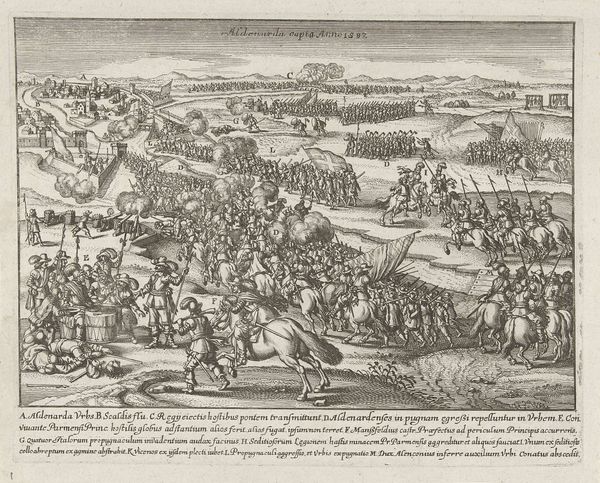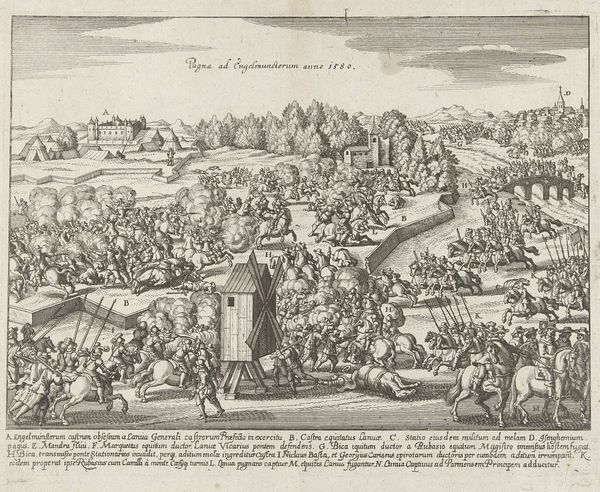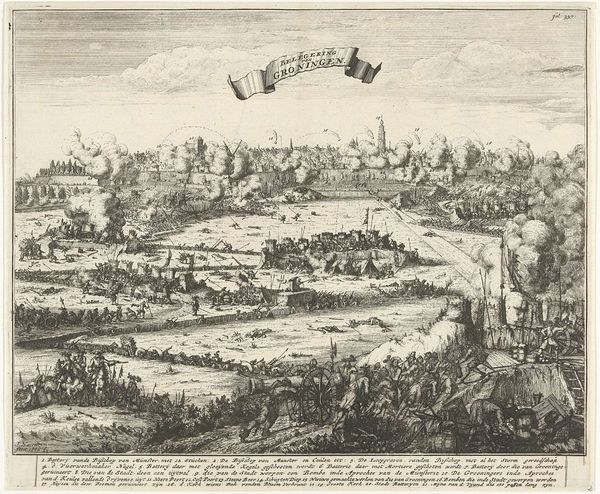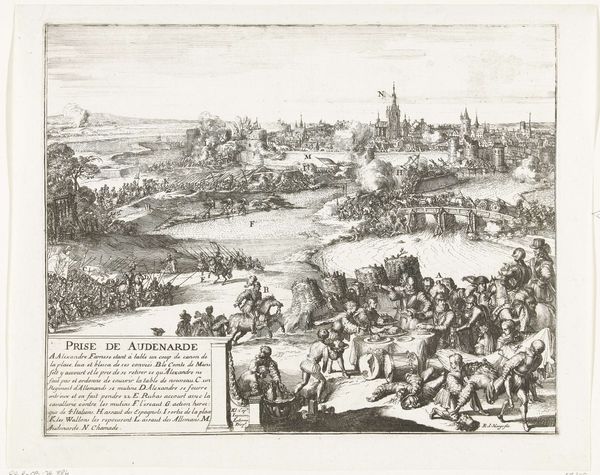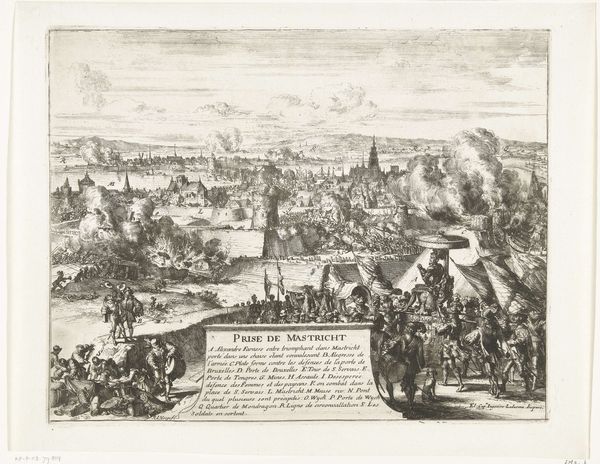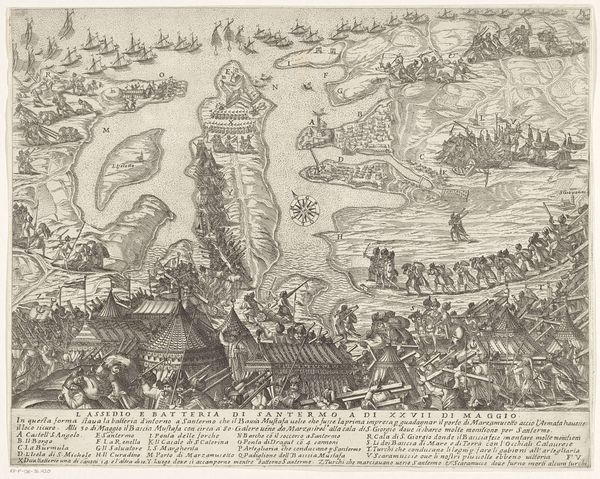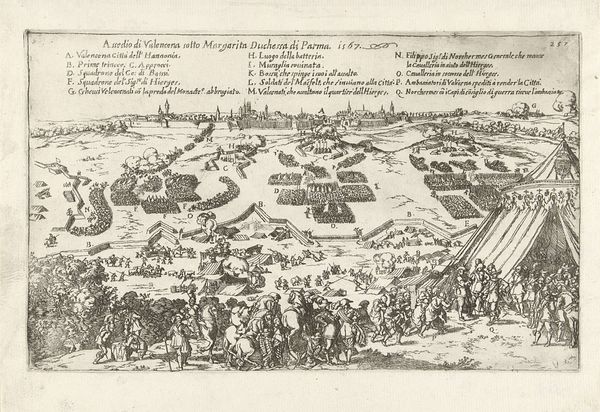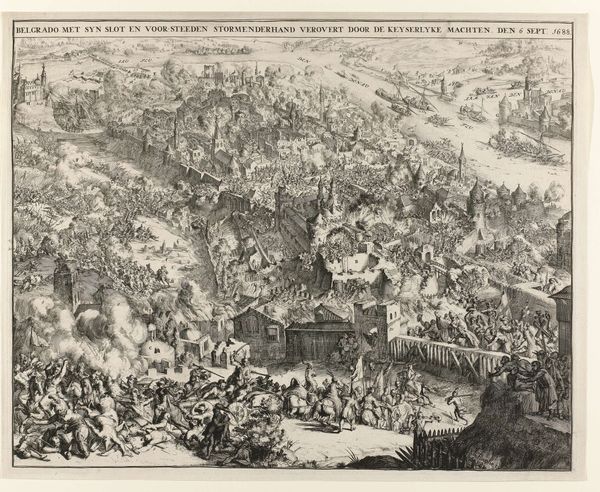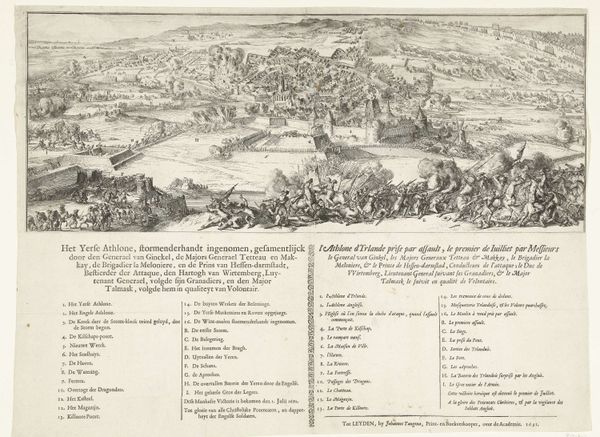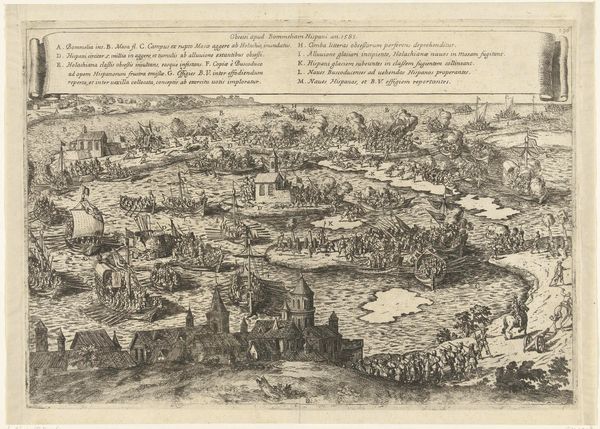
print, engraving
#
baroque
# print
#
landscape
#
line
#
history-painting
#
engraving
Dimensions: height 256 mm, width 353 mm
Copyright: Rijks Museum: Open Domain
Gaspar Bouttats made this print of the Battle of Seneffe in 1674, using an engraving technique. This process involves cutting lines into a metal plate, applying ink, and then transferring the image to paper. Notice how the linear quality of engraving lends itself well to depicting the chaos of battle. The fine lines capture the movement of soldiers, the smoke of gunfire, and the overall sense of turmoil. This print wasn't made on a printing press by an individual artisan: the engraver's skill was put to the service of large-scale distribution of imagery, a key component of early modern political life. Considering the social context, prints like this served as a form of propaganda, shaping public perception of historical events. The labor-intensive process of engraving was crucial in disseminating information and promoting specific narratives. This work invites us to consider the intersection of artistry, industry, and ideology, and challenges any assumption of art being somehow separate from the world of work.
Comments
No comments
Be the first to comment and join the conversation on the ultimate creative platform.

